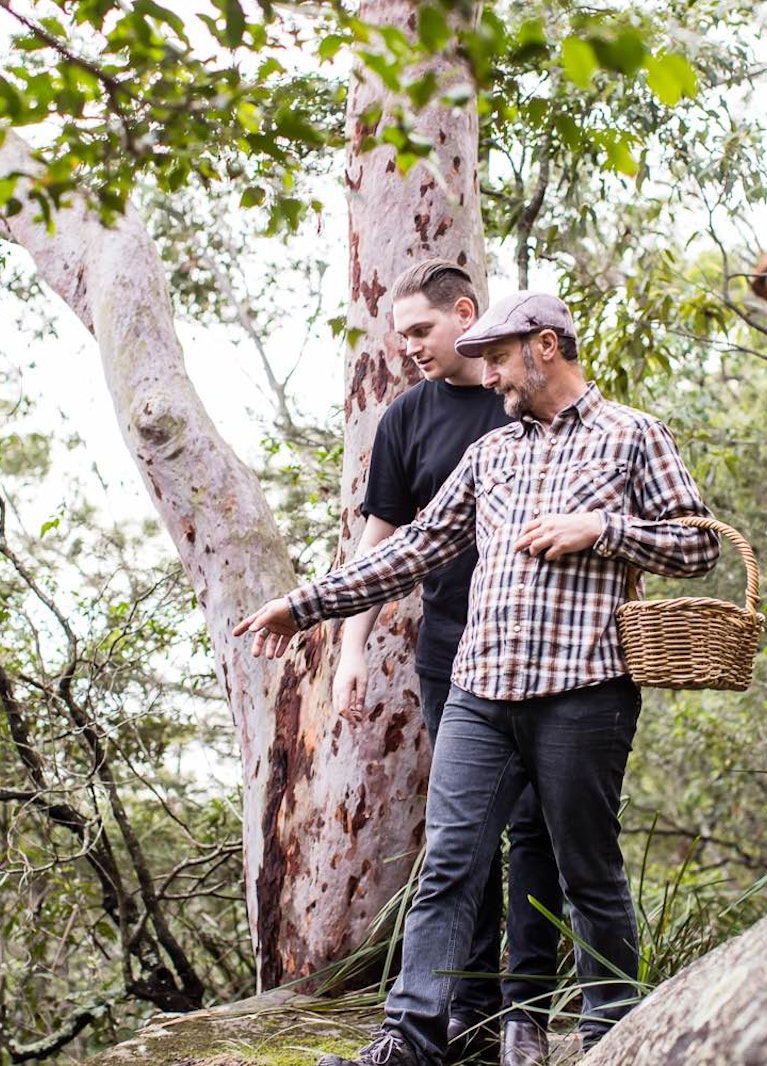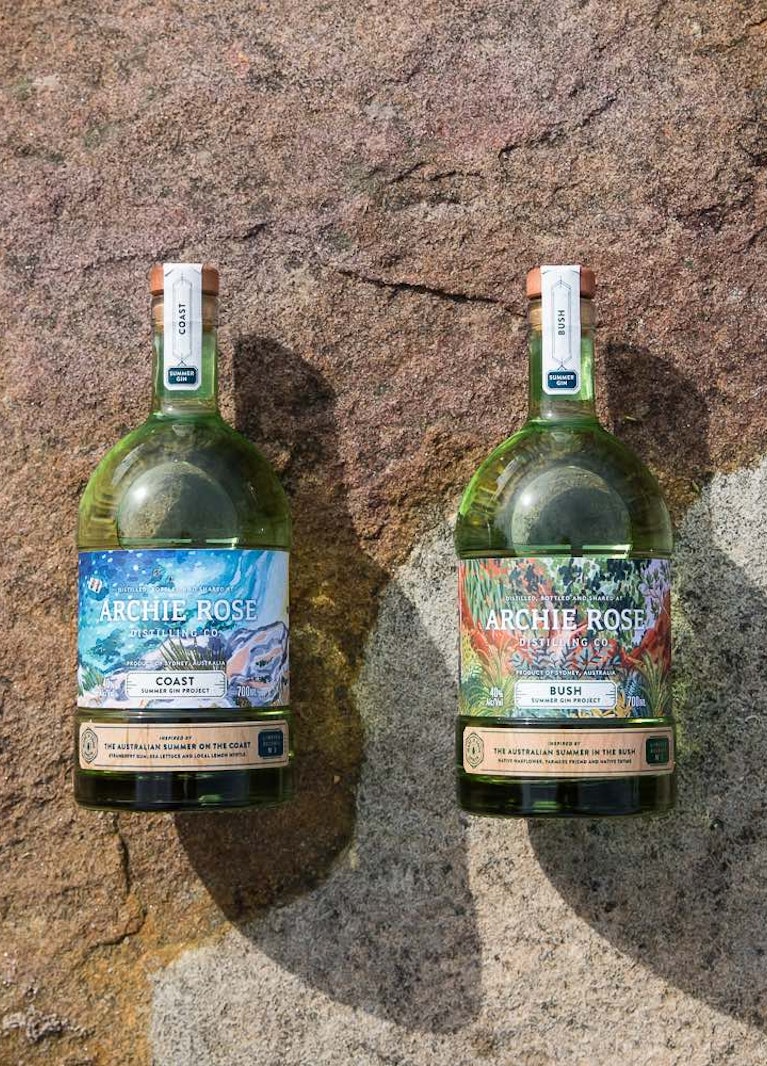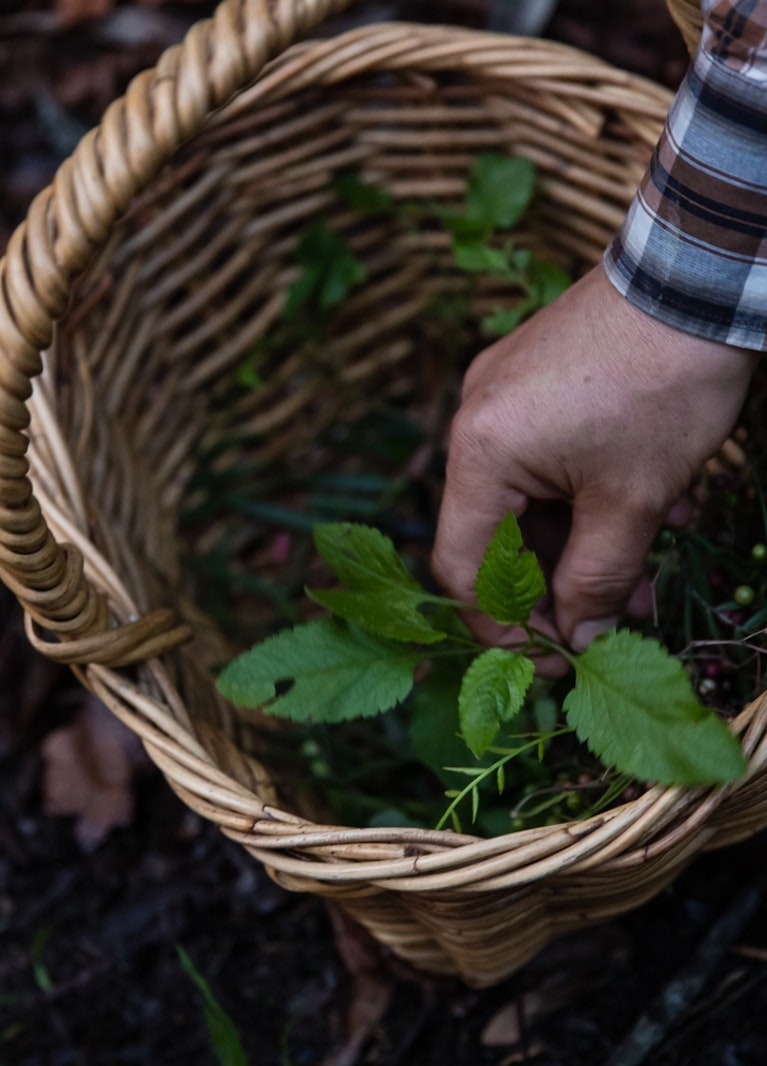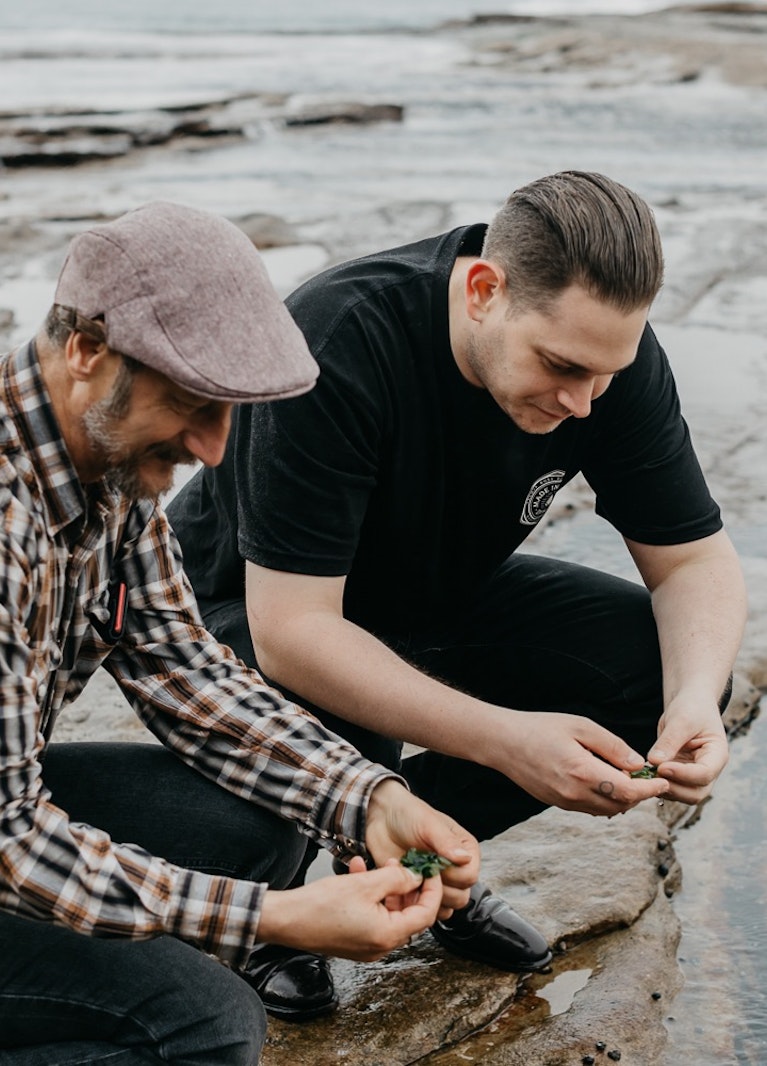When a Distiller Meets a Professional Forager, Anything Can Happen

From weeds and bat poo to wild weather and contemporary art: Master Distiller Dave Withers and Forager Diego Bonetto talk about making Bush and Coast with wild ingredients.
DAVE: OK, first thing’s first. How do you become a forager, Diego?
DIEGO: I’ve been a forager since I was five. I grew up on a farm in Northern Italy, and when you grow up in a rural environment, they don’t call it child exploitation, they call it Jobs To Do.
DAVE: Funny you should say that, my grandfather had a winery. I’d get dropped into a vat with a scrubbing brush and he’d say, “See you in four hours.”
DIEGO: Absolutely. Our job as kids was to go and get the wild produce; the greens in springtime, the summer berries, the mushrooms in autumn. We were taught what to look for and away we’d go. I’ve taught foraging now professionally for the last 15 years.
DAVE: How did you decide you wanted to make a career of it?
DIEGO: I moved to Australia about 25 years ago and starting working in orchards. Immediately I found out what was edible around me: this is good, this isn’t good, that’s my dinner, that sort of thing. I found out that even with such an incredible ancestry in Australia, there wasn’t much knowledge of the land and foraging wasn’t practiced very widely. I started using foraging as a way to engage with this foreign land, and investigate cultural belonging and environmental identity. I’d take my family and kids out, then friends, and then friends of friends. Before I knew it I was running workshops and sourcing wild ingredients for Archie Rose!
DAVE: How funny that we’re here now, about to launch Bush and Coast. Our friends at Cornersmith, who we’ve worked with for a long time, suggested you. And it literally just started when I picked up the phone and said, “Hey, I hear you can get some cool stuff.”
DIEGO: I remember when we first spoke you said you were very interested in capturing the essence of Sydney, specifically.

sign up to Archie's Journal for first access to Summer Gin Project pre-sales.
DAVE: With our whisky production we really went deep, meeting the farmers who grow the grain and actually visiting the places where the produce came from. We knew we wanted to go a bit deeper on the ingredients we used in our gins, too. Most gins just need four ingredients – London Dry, for example, can be made anywhere in the world. But we wanted to say something about who we are in Sydney, who we are as Australians. We have thousands and thousands of plants that are found nowhere else on earth!
DIEGO: There’s an incredible amount of botanical variety in this country, yes. It makes my job very interesting. I recall when we started the process, I was quite passionate about some ingredients that you weren’t so keen on. I was excited to experiment with African olive leaves and the weed, farmer’s friend, for example.
DAVE: Farmer’s friend for Bush was such a game changer. We have this idea that we can only use exotic and elevated produce when making gin. But you were so passionate about farmer’s friend. I remember just thinking, “What? It’s a weed, mate.” But you twisted my arm.

DIEGO: How would you describe the flavour of what you discovered?
DAVE: The farmer’s friend came up with a really interesting and engaging flavour. It was one of those great discoveries where you go: Right, this is definitely going in the gin! Is it a sexy ingredient? Hell no. But we have to put the ingredient first and what it has to say. Have you made gin before, Diego?
DIEGO: No, never before. I’ve made wormwood-style herbal liqueurs in Italy. But this entire process was new to me. Trying to forage plants with oils and aromas that would survive the distil, but also plants where the flavour could be extracted with different methods (and enough of them!) was a big learning curve for me. The whole process took two and a half months, last summer. It was bit strange because it was two and half months in some of the driest times Sydney had ever seen.
DAVE: It was, but I think that was very reflective of a Sydney summer. We knew we really wanted the gins to be an emotive experience. We wanted them to take you to the bush, and take you to the coast. For Bush, for example, it was those herbal characteristics like eucalyptus and tea tree sort of aromas that we were after. And for Coast, it was more about capturing the sea breeze, fresh fruit, all of those things we think about when we’re by the coast.
DIEGO: In truth, at times that was very hard to do. Because it’s wild produce, there aren’t fields of it. There’s one tree here and there’s one tree there, and maybe that tree doesn’t have anything on it.
Peppercorns and lemon myrtle, for example, are very light. It’s laborious picking them one by one. It took three of us a full eight hours to pick enough peppercorns for one run! Farmer’s friend, too, was tricky. It’s an opportunistic plant and flourishes as long as there’s water and rain. On another day, there was no sea lettuce when you needed it because of the wild seas.
Sometimes I couldn’t supply enough. By the time we were harvesting, it wasn’t the fruiting season, it was too dry, things like that. At times I had to just keep going around and around and around and looking at my little brain-map of all the possible possibilities!
DAVE: Yes, Mother Nature is not good at spreadsheeting. She doesn’t like Excel. And she doesn’t care about our timeline!
DIEGO: Has this process changed the way you work at all, Dave?
DAVE: Understanding the challenges of harvesting these ingredients was a real takeaway for us. The challenges of having to go to multiple locations for the ecology of the species (as you reminded us, you can’t just take everything that’s there). Understanding that we’re dealing with imperfect things - it’s never a perfect cultivated amount. Those things have really changed the way that we source ingredients in the distillery.
I think moving forward it’s going to be less about trying to standardise the produce that’s coming into the distillery, and more about embracing the individuality of the ingredients that we have access to.

DIEGO: When we first met, you told me you had an art background. That was really interesting to me, because I’m a contemporary artist. I’m a storyteller. How does your creative urge influence your distilling?
DAVE: We could block out an afternoon to explain that! I did a major in Sculpture, and worked professionally as an artist in my misspent youth. I think great distilling and blending happens when science and creativity meet. It’s about what you taste and how things play together. Flavours work together in the same way that some shapes or colours work well together, and some others don’t.
DIEGO: And yes, lots of things don’t always work, as we found out.
DAVE: Totally. At first, we really wanted to bring in an element of smoke into the gin, and we made smoke water with sustainably sourced ironbark. Sadly, it just didn’t work. We realised it was a completely separate project! Then there was the trials with olive leaves, the wild fennel...
DIEGO: Yes, and a couple of seaweeds like golden kelp and Neptune’s necklace. There was the dandelion roots, the lilly pilly. I think there were around 15 wild ingredients that Archie Rose played around with. How do you know a good trial from a bad one?
DAVE: We’re looking for clean and individual flavours. Something that’s fairly defined so that when we use it in a gin it says one thing. If your distillate says 20 things, it’s going to be really hard.
We wanted to distil Moreton Bay figs, for example, because they have that really distinctive Sydney summer aroma. But that I was told that it’s actually bat poo that causes the smell! Bat poo! The bats eat the figs and then they do their business on the ground and I’m pretty sure that’s what causes that aroma. When I found that out, we decided we should probably skip that one!
As always with these things, you start with more bricks than you need to build a house. And you end up with bricks that don’t have a home.
DIEGO: Yes, but you can build the fencing with that! I think it’s very brave of you to just acknowledge with some of the runs, ok it’s not going to work, and let go.
DAVE: I think it’s richer that way. It allows the right ingredients, weed or otherwise, to shine.
Learn more about Bush and Coast and don't forget to sign up to Archie's Journal for first access to Summer Gin Project pre-sales.